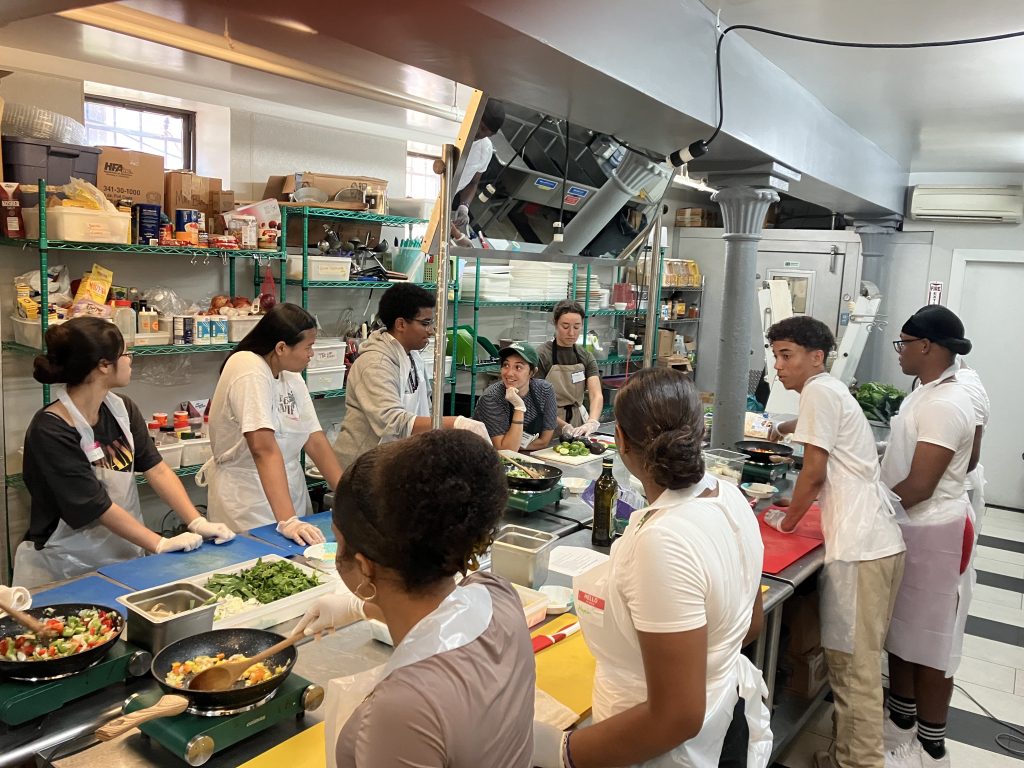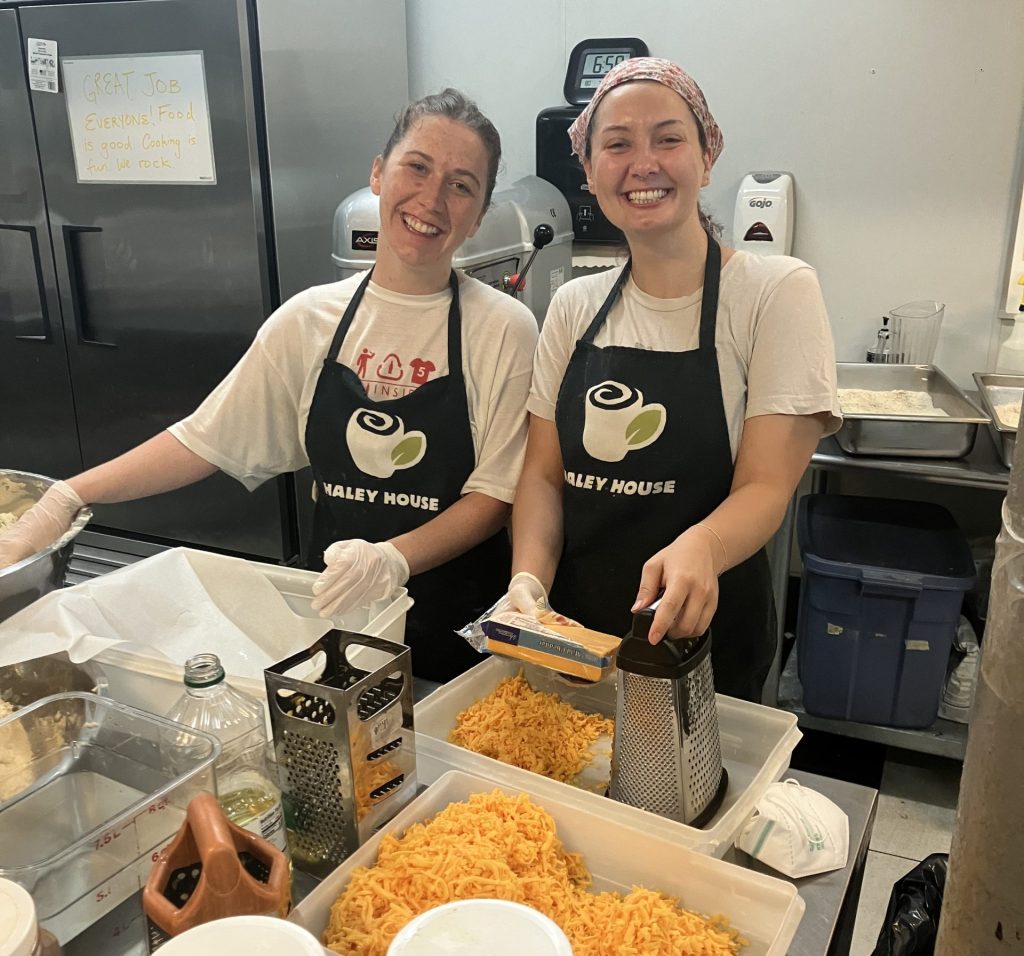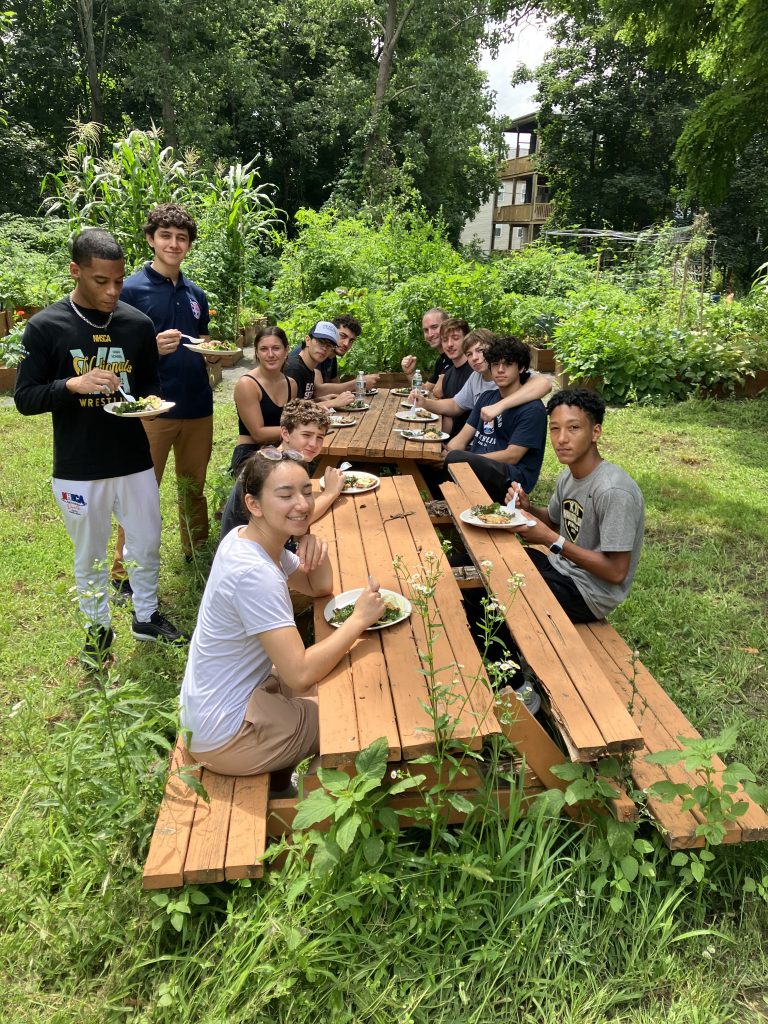Thinking about volunteering with Take Back the Kitchen, but not sure what it actually looks like? Maybe you’re not a confident cook, or maybe the idea of leading a class makes you nervous. That’s totally normal. However, each class is led by an experienced professional chef who will be guiding both the students and volunteers. If you don’t know how to do something, just look to the chef for guidance, and you might just find yourself becoming a better cook alongside the students. Here’s a peek into what a typical volunteer shift is like:

Before the Class: Prepping the Space
Volunteers usually arrive an hour before class starts to help set up. That might mean washing the produce for class, laying out cutting boards, or checking in with the lead chef to see how you can aid them. It’s also a chance to get familiar with the day’s recipe and class flow. You don’t need to be a pro, just come with an open mind and a willingness to jump in.
During the Class: Cook and Connect
Once class begins, things get moving! Volunteers help students chop, sauté, season, and plate, all while learning alongside them. You might demonstrate a knife skill, guide someone through a recipe step, or just be an encouraging presence if they’re unsure. There’s usually laughter, lots of learning, and the incredible smell of something nutritious and tasty in the works. TBK partners with mission-aligned community organizations that serve youth (ages 10+), families, and seniors, and each class is tailored to meet the needs of the group in the room. Whether you’re working with teens building kitchen confidence or elders sharing cooking wisdom, you’ll be helping create a space that’s responsive, inclusive, and joyful.
TBK classes are about more than just the food: they invite participants to reflect on how we eat and why it matters. As a volunteer, you help create space for those conversations, whether by listening, sharing your own food stories, or simply making sure everyone feels included.

After Class: Sharing the Meal and Cleaning Up
At the end of class, everyone comes together to eat the meal they made. This is often the most fun part of the day. Volunteers sit down with students, share food and conversation, and help model what communal eating can look like. Then, everyone pitches in to clean up, leaving the kitchen ready for next time. Volunteers typically stay for 30 minutes to an hour after the class to help the chef put away clean dishes and return the kitchen to its original state.

Why It Matters
Volunteering with TBK isn’t about being the best cook in the room. It’s about showing up and helping people feel more confident in the kitchen and connected to their food. Whether you’re helping a young person learn how to hold a knife safely or learning something new yourself, every shift is a step toward building a healthier, more empowered community.
